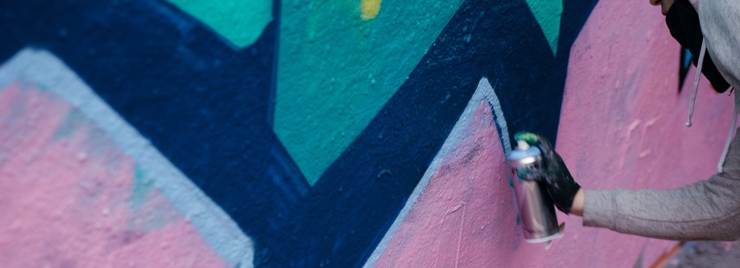There is a wide range of glues, gasses, and aerosols that contain substances that can alter a person’s mood and perception—basically, if one is so inclined, get them high. Of course, these substances are wildly dangerous. They are technically depressants, which means they lower heart rate and breathing. Even on a first try, using inhalants can cause death (this is known as Sudden Sniffing Death).
Of course, none of this stops people (particularly young people) from taking part in this potentially fatal activity. Beyond that, it can also be addictive.
Known Inhalants
Huffing is a slang term used to describe the deliberate inhalation of such volatile, toxic substances as spray paint and gasoline. The demographics of those using inhalants will skew a bit on the younger side because of the easy access to many different types of products to huff or sniff.
Some of these common products include:
- Cleaning fluid
- Deodorants
- Felt markers
- Hairspray
- Lighter fluid
- Nail polish remover
- Nitrous oxide
- Paint thinner
- Whipped cream
Nitrous oxide is a common ingredient in whipped cream canisters, where it’s used as a propellant. Youngsters are often unaware of the severe dangers of huffing. Huffing can cause bone marrow damage and also kidney and liver damage. As we mentioned before, it can kill even after just one episode of sniffing.
People who have become addicted inhalants suffer from a condition known as inhalant use disorder. Like alcohol use disorder (AUD), these addicts cannot quit their addiction even though it’s doing harm. The cravings and urges to use are very strong, and addicts will continue to sniff even though their relationships, schoolwork, life interests all seem to be crumbling around them.
How Inhalants Work
Once the inhalant substance reaches the lungs, it’s quickly transported to the brain. Effects are similar to those of alcohol intoxication, including slurred speech and euphoria. Users may feel dizzy and hallucinate, and they may lose consciousness altogether because the body is being deprived of oxygen due to the inhalant substance. The high lasts only a few minutes.
Some inhalants enter the fat tissue of the body and cause long-term effects such as damage to nerves and neurons, or brain cells.
What to Look For
Signs of inhalant abuse include strange odors, slurred speech, confusion, insensitivity to pain, loss of appetite, and stumbling. You may also see paint on your loved one’s face. They may smell of solvents, and there could be random towels or rags left around smelling like degreaser, gas, or nail polish. If your teen is using inhalants, you will likely see a drop in grades. They may also have some new friends who are also users and act the same way. Symptoms can be sometimes mistaken for alcohol use disorder.
Huffing is extremely dangerous, and it’s easy for teens to get their hands on the items they need to get high. Many are common household items, as the list above shows. If there is a reason to believe someone you love is huffing, it’s critical to get them into treatment right away. Don’t hesitate. Their life is at stake.
Help for Your Teenager
Using inhalants for teens is a dangerous activity but it also displays deeper issues. Even though inhalants are by no means a safe alternative, the young person huffing will usually graduate to other means of getting high. At First Steps Recovery in Fresno County, California, we have a premier addiction treatment center that has a program specifically designed to help teens. It is an intensive outpatient program, which means that your teen will still live at home while taking part in the high quality, specialized treatment. Our goal is to keep families actively involved in the recovery process of a young person. So we provide the perfect setting and tools for that to happen.
If you have a teenager who needs help breaking an addiction to inhalants or any other substance, please call us today. We are here to offer help and hope to families in need. Call now: 844-489-0836.




